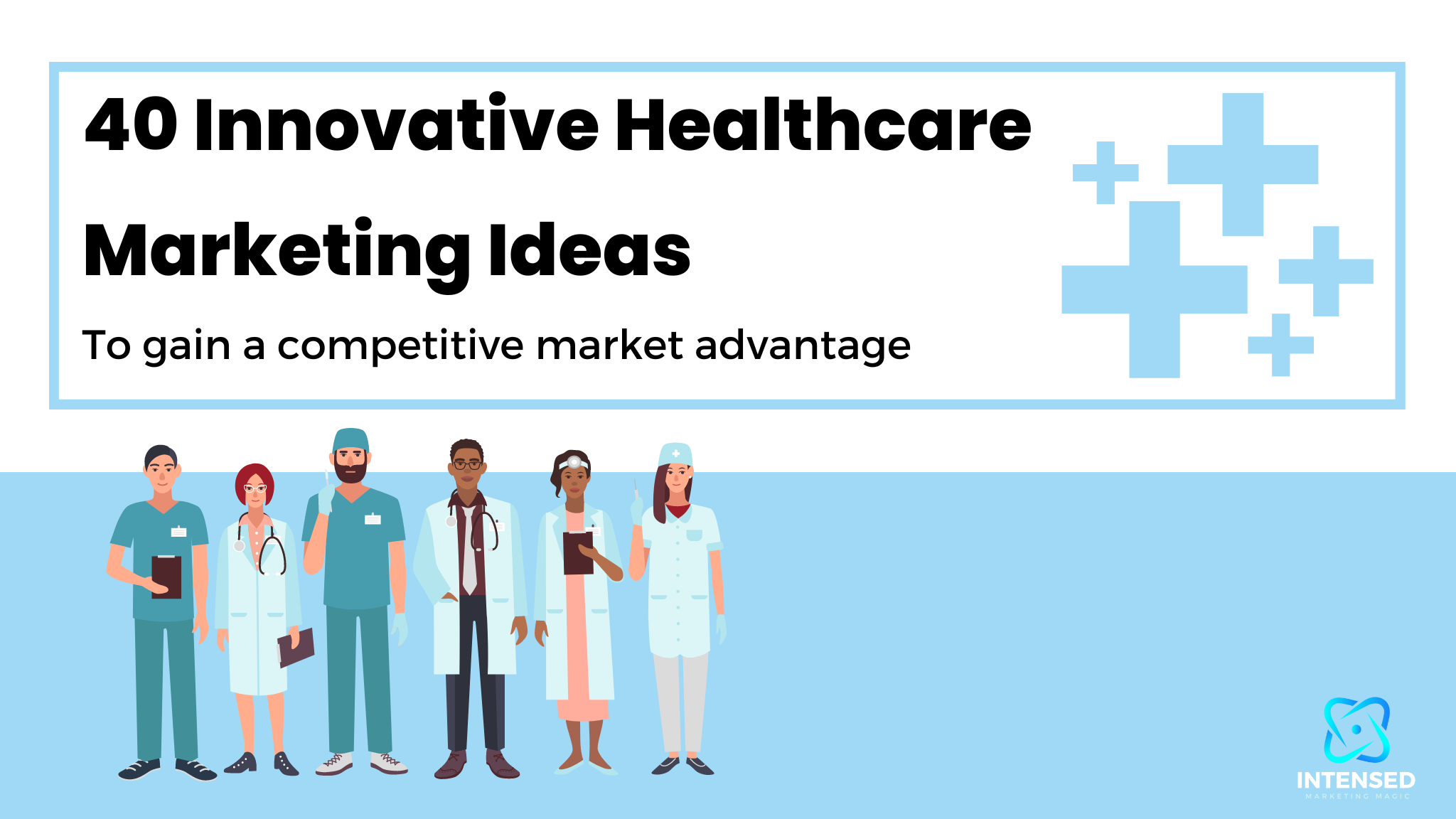The healthcare industry is undergoing rapid change. With shifting consumer expectations, emerging technologies, and new competitors, healthcare marketers must embrace innovation to reach and engage patients.
In 2024, innovating the patient experience will be more critical than ever. As healthcare consumerism rises, patients increasingly make healthcare decisions like other consumer purchases – seeking convenience, value, and a personalized service.
Simultaneously, healthcare competition is intensifying with retail clinics, urgent care centers, and alternative virtual options vying for patients.
To stand out, leading healthcare marketers will adopt new technologies and strategies to engage patients, drive loyalty, and position their organization as an innovative industry leader.
This article highlights the top healthcare marketing innovations spanning content, digital experiences, data-driven approaches, virtual care, social strategies, and more.
By starting to experiment and optimize these areas now, healthcare marketers can gain a competitive advantage as we enter 2024.
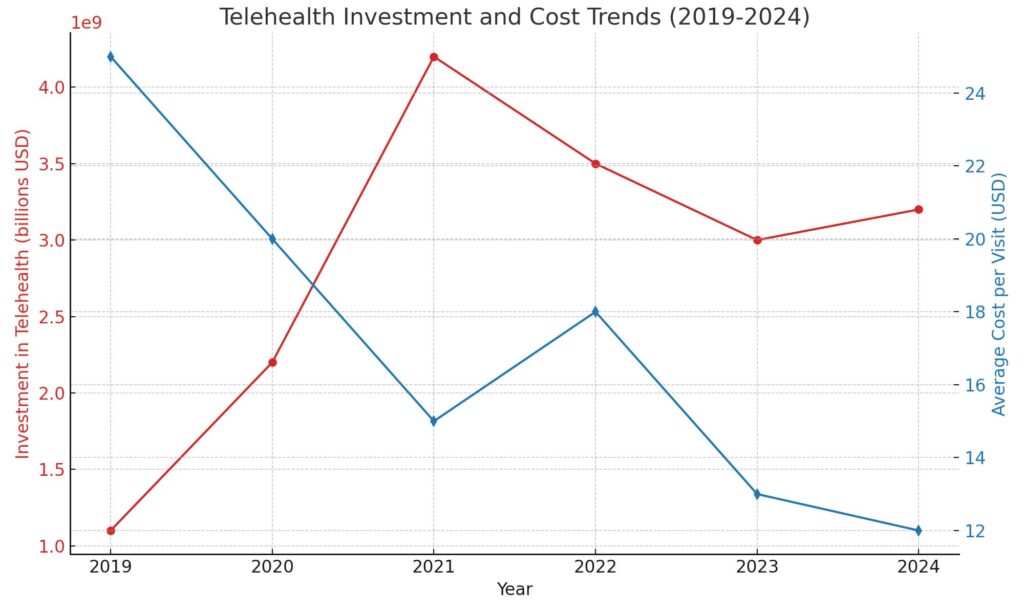
- Why Healthcare Marketing Matters More Than Ever
- Gamification and Interactive Content
- Augmented Reality (AR) Experiences
- Voice Search Optimization
- Influencer and Patient Advocate Partnerships
- Personalized Chatbots and AI Assistants
- The Rise of Telemedicine and Virtual Care
- Content Marketing for Healthcare
- Social Media Marketing for Healthcare
- Experiential Marketing and Community Events
- Podcast and Audio Content Marketing
- Personalization in Healthcare Marketing
- Artificial Intelligence (AI) in Healthcare Marketing
- Measuring and Optimizing Marketing Performance
- Conclusion
- Top 10 Most Popular Questions Related to Healthcare Marketing Ideas
Why Healthcare Marketing Matters More Than Ever
Before we dive into the specific strategies, let’s take a moment to understand why effective healthcare marketing is so crucial in today’s landscape:
- Increased competition: With more healthcare providers vying for patients’ attention, it’s essential to differentiate your brand and stand out from the crowd.
- Changing patient expectations: Today’s patients are more informed and empowered than ever before. They expect personalized, convenient, and digital-first experiences from their healthcare providers.
- Technological advancements: From telemedicine to artificial intelligence, new technologies are transforming the way healthcare is delivered and marketed.
By embracing innovative marketing techniques, you can not only attract new patients but also foster loyalty among existing ones. So, let’s explore the top healthcare marketing ideas for 2024!
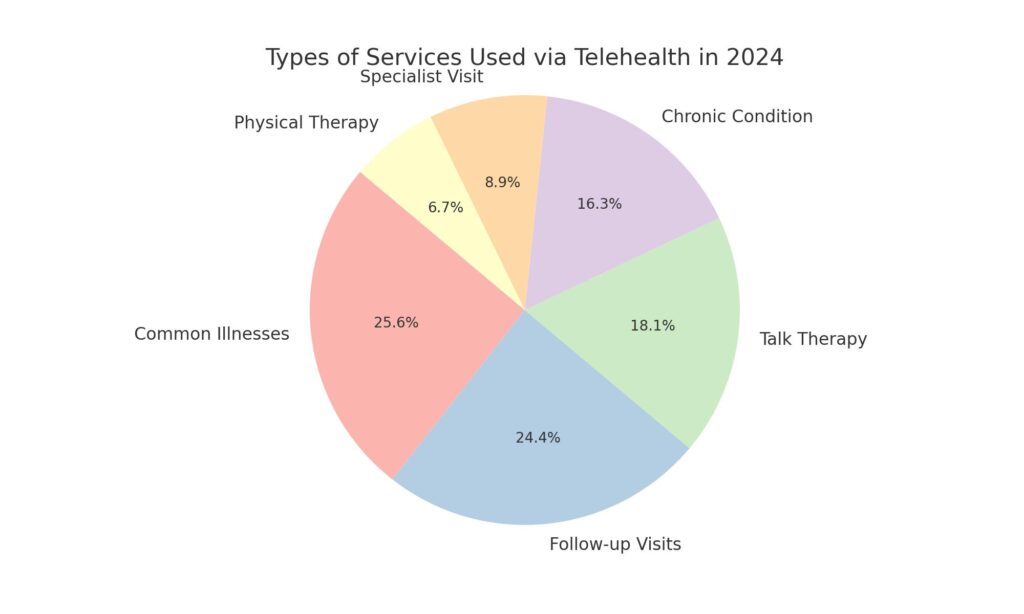
Gamification and Interactive Content
Gamification applies gaming elements that engage and motivate audiences to non-game contexts. Healthcare marketers are increasingly gamifying websites, mobile apps, patient portals, and marketing campaigns to educate and connect with patients.
Specific examples include:
- Interactive quizzes and assessments – Quizzes allow patients to assess their health risks and better understand conditions. Assessments can identify gaps in health literacy.
- Health management games – Games that entertain while teaching health management skills can boost patient education and treatment plan adherence.
- Rewards programs – Programs that award points, badges, and tangible rewards for completing health activities promote engagement.
- Contests and leaderboards – Contests allow patients to compete with others on health metrics like steps walked. Leaderboards track progress.
Gamification makes health literacy and behavior change fun and rewarding. With 73% of millennials preferring gaming over traditional education, gamification presents a big healthcare marketing opportunity.
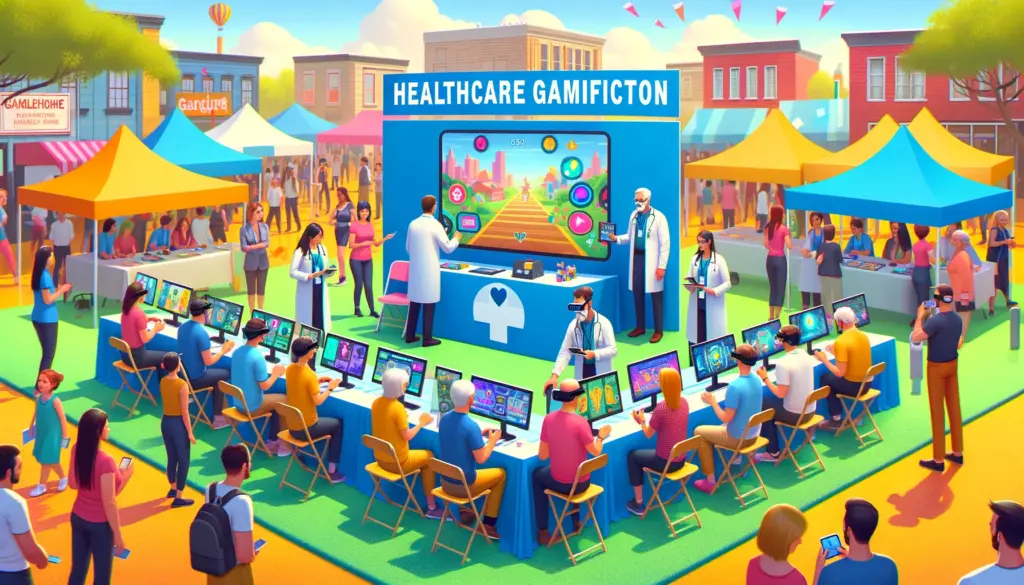
Augmented Reality (AR) Experiences
Augmented reality overlays digital elements onto the real world via smartphones or wearables. Healthcare organizations are embracing AR to create immersive, interactive patient experiences.
Potential AR uses include:
- Virtual health facility tours – Allow prospective patients and staff to digitally tour facilities, operating rooms, or lab spaces prior to an in-person visit.
- Medical equipment demonstrations – Show patients how medical devices or equipment will be used during upcoming procedures or treatment.
- 3D anatomy visualization – Provide interactive 3D models of anatomy and disease states to enhance patient education.
- Virtual patient experiences – Let patients preview upcoming experiences like imaging, physical therapy, surgery preparation, or recovery.
- Simulation of treatment outcomes – Show patients how medical treatments can restore proper function or improve aesthetics.
AR makes healthcare experiences more transparent, educational, and personalized. As AR technology advances, the opportunities to boost patient satisfaction and outcomes with interactive visual experiences will skyrocket.
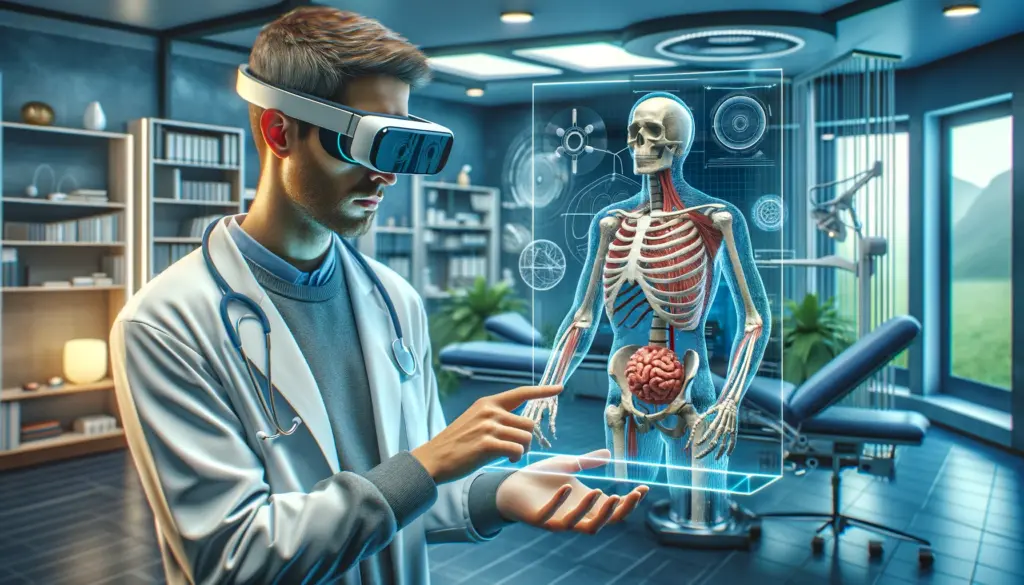
Voice Search Optimization
With the rise of voice assistants like Alexa and Siri, voice search is growing rapidly. 30% of all searches are voice searches. Healthcare marketers who optimize for voice search now can stay discoverable and accessible as voice interfaces become pervasive.
Key steps for optimizing for voice search include:
- Conducting keyword research on patient voice search questions and phrases
- Optimizing on-page content and metadata for voice queries
- Building structured data into website markup to improve visibility
- Optimizing Google My Business and other listings for voice search
- Developing custom voice search applications that provide health answers conversationally
Voice-Activated Apps and Skills
Develop voice-based applications or skills for popular voice assistants:
- Create apps that provide quick answers to common health questions
- Allow patients to schedule appointments or refill prescriptions using voice commands
- Offer guided meditation or relaxation exercises through voice apps
Early movers in voice search will gain visibility as voice emerges as a key patient interface. Voice presents opportunities to conveniently deliver health information and services through new modalities.
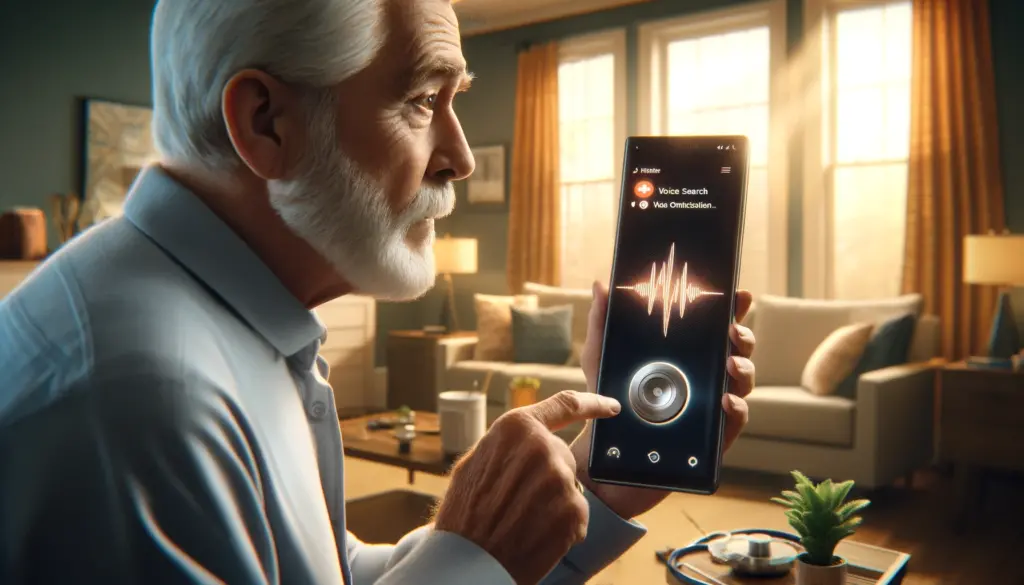
Influencer and Patient Advocate Partnerships
Partnering with influencers allows healthcare brands to tap into their captive and engaged audiences. There is huge potential to work with health and wellness influencers on social campaigns.
But even more powerful are partnerships with patient advocates – individuals passionate about raising awareness of a health condition or promoting a cause.
Some partnership examples include:
- Co-creating content like blog posts, social videos, or podcasts to provide educational value
- Collaborating on social media takeovers where patient advocates share day-in-the-life perspectives
- Featuring patient stories and spotlights that put a relatable face on healthcare experiences
- Participating in or sponsoring advocacy events to increase community involvement
Partnerships based on shared missions build trust and credibility. Audiences see patient advocates as authentic voices who care about more than financial gains.

Personalized Chatbots and AI Assistants
Chatbots allow healthcare organizations to provide 24/7 automated support via messaging apps or text interfaces. Powered by artificial intelligence (AI), chatbots can intuitively answer patient questions, triage symptoms, schedule appointments, and handle other simple tasks.
In 2024, AI-powered chatbots will become sophisticated patient care assistants. Key capabilities will include:
- Natural language processing to understand context and patient intent
- Integrations with healthcare IT systems to access patient data and history
- Conversational capabilities to simulate human-like dialogue
- Personalization of responses and recommendations based on patient profiles
- Secure transmission of sensitive patient information and health history
Chatbots streamline interactions and enable scalable support without consuming staff resources. Patients appreciate the convenience of messaging chatbots for quick needs.
The Rise of Telemedicine and Virtual Care
The COVID-19 pandemic accelerated the adoption of telemedicine or virtual visits. The convenience of connecting with clinicians remotely is here to stay as part of ongoing care models.
From 2020 to 2021, telehealth usage grew 38x in the U.S. Changes in legislation and reimbursement also expanded access.
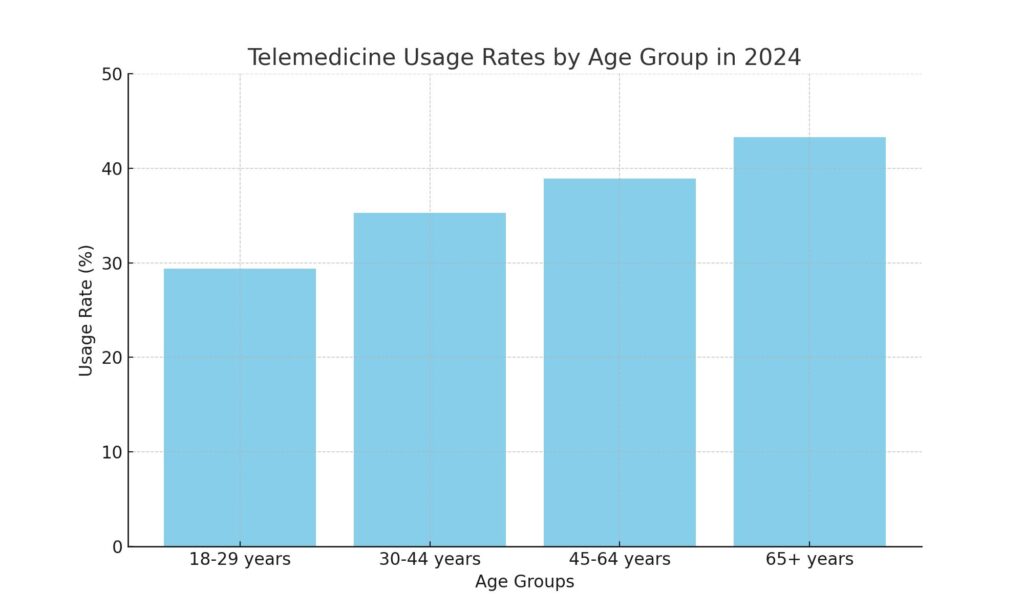
Forward-thinking healthcare marketers recognize telemedicine’s massive potential to provide accessible, convenient care. Key telemedicine marketing strategies include:
Telemedicine Marketing Strategies
- Educating patients on telemedicine benefits – Communicate the convenience of remote care and telemedicine’s capabilities to diagnose, monitor, and treat many conditions.
- Promoting telemedicine services across channels – Market virtual care options on your website, social media, email, advertising, and other touchpoints.
- Simplifying the user experience – Remove friction from the patient journey by making telemedicine visits easy to schedule, join, and conduct through integrated platforms.
- Highlighting telemedicine success stories – Share patient testimonials, reviews, and advocacy to build credibility in virtual care.
- Leveraging social media – Promote telehealth providers, services, and health tips through regular social media content and community management.
Telemedicine opens the door to engaging patients anytime, anywhere. As healthcare moves beyond office walls, telemedicine marketing will be critical for acquisition and retention.

Content Marketing for Healthcare
Valuable healthcare content boosts visibility, trust, and patient relationships. Unfortunately, 77% of healthcare content goes unused, representing a huge missed opportunity.
Leading healthcare brands will ramp up content marketing across all formats. Here are some top content types to invest in:
Types of Content to Create
- Blog articles and FAQs – Address common patient concerns, conditions, treatment options, health literacy topics, and specialty areas to attract search traffic.
- Health tip infographics – Transform advice, checklists, statistics, and other health data into shareable visuals.
- Procedure overview videos – Explain upcoming medical or surgical experiences through videos to put patients at ease.
- Podcasts and webinars – Create audio and video content to engage audiences and position healthcare experts as thought leaders.
- Interactive tools – Quizzes, assessments, calculators, and other tools provide value while generating leads.
- Patient stories – Spotlights on specific patients or conditions build empathy and connection.
Optimizing Content for Search Engines
To maximize discoverability, healthcare content must be optimized for search. Key tactics include:
- Performing keyword research to identify topics that match patient search intent.
- Front-loading critical keywords and integrating them naturally throughout content.
- Structuring content effectively with descriptive headers, subheaders, and bullet points.
- Building external links to boost domain authority and rankings for target keyword terms.
Search-optimized content ranks higher and converts visitors into patients. It’s crucial for healthcare marketers to perfect on-page SEO and content promotion techniques.
Social Media Marketing for Healthcare
Social media allows direct engagement with patients while raising visibility. But healthcare has lagged in adoption, with only 65% of hospitals using social media marketing.
Collaborate with Patient Advocates
Partner with patient advocates and influencers to create authentic, relatable content:
- Identify influencers whose values align with your brand and have a genuine connection to the healthcare industry
- Collaborate on sponsored content, social media takeovers, or patient stories
- Showcase real patients’ experiences and successes to build trust and credibility
Create Engaging Social Media Content
Share a mix of informative and engaging content on your social media channels:
- Post blog articles, videos, and infographics that educate and inspire your followers
- Encourage patient reviews and testimonials, and respond to all feedback professionally
- Participate in relevant social media conversations and hashtags to expand your reach
Host Live Social Media Events
Use live social media platforms like Facebook Live or Instagram Live to host interactive events:
- Conduct Q&A sessions with healthcare experts
- Offer virtual tours of your facilities
- Demonstrate new products or services
There are tremendous opportunities for healthcare marketers on social:
Effective Social Media Strategies
- Share valuable content – Post videos, infographics, blog content, health tips, and other assets to educate and attract followers.
- Engage community members – Build relationships by actively listening, responding, and interacting with patients and advocates.
- Run social campaigns – Launch contests, hashtag initiatives, live videos, and other campaigns to spark engagement and growth.
- Promote services – Highlight healthcare offerings, events, providers, and locations to raise awareness.
- Generate and share testimonials – With patients’ consent, spotlight positive reviews, stories, and social shares as social proof.
The healthcare space is ripe for humanizing brands through social media. With smart strategies and consistency, healthcare marketers can drive real business impact.

Experiential Marketing and Community Events
Experiential marketing activates immersive experiences that forge emotional connections with healthcare brands. Pop-up events, health fairs, workshops, and other in-person touchpoints help healthcare organizations engage communities.
Examples of local experiential marketing include:
- Health screening events where patients receive free risk assessments or biometric tests.
- Seminars that provide health education, featuring healthcare experts as speakers.
- Community 5k races, walks, or fitness classes sponsoring health causes and charities.
- Healthy cooking demonstrations or fitness classes promoting wellness and active lifestyles.
- Mock healthcare experiences like model emergency rooms to preview services.
- Tour events at new facilities to showcase offerings and modern amenities.
Experiential marketing makes emotional connections through memorable, interactive moments. Healthcare organizations can become community pillars while positioning facilities and services.

Podcast and Audio Content Marketing
Podcasts represent an under-utilized channel for healthcare marketers. Currently, only 37% of healthcare marketers use podcasts – despite the fact that over 100 million Americans listen to podcasts monthly.
Healthcare podcasts present opportunities to:
- Share health stories and expert advice in an easily digestible audio format.
- Build thought leadership and credibility through expert interviews.
- Produce episodic content to keep audiences engaged long-term.
- Insert calls-to-action to drive traffic to websites or services.
- Repurpose audio content into blogs, videos, and snippets for social media.
Podcasts create connections through powerful narrative stories. They offer a unique way for healthcare brands to enrich patient education and relationships.
Personalization in Healthcare Marketing
Today’s healthcare consumers expect and demand personalized experiences. Unfortunately, only 36% of healthcare marketing is personalized – indicating huge room for improvement.
Here are some key tactics to deliver tailored interactions:
Personalization Tactics
- Website personalization – Tailor website content and navigation based on factors like location, interests, and demographics.
- Personalized email – Segment email lists to send tailored promotions, health tips, and announcements based on patient attributes.
- Retargeting with personalized ads – Serve customized ads across channels to website visitors based on the specific pages they viewed.
- Individualized health recommendations – Use health data and AI to provide custom health risk assessments, treatment suggestions, and preventative next steps.
- Personalized patient portals – Tailor portal dashboards, content, and notifications to each patient’s health profile and interests.
- Targeted social media advertising – Serve customized social ads to different patient personas based on their demographics and behavior.
Personalization allows healthcare brands to shift from one-size-fits-all to tailored interactions. Marketers must balance personalization with privacy to build patient trust.
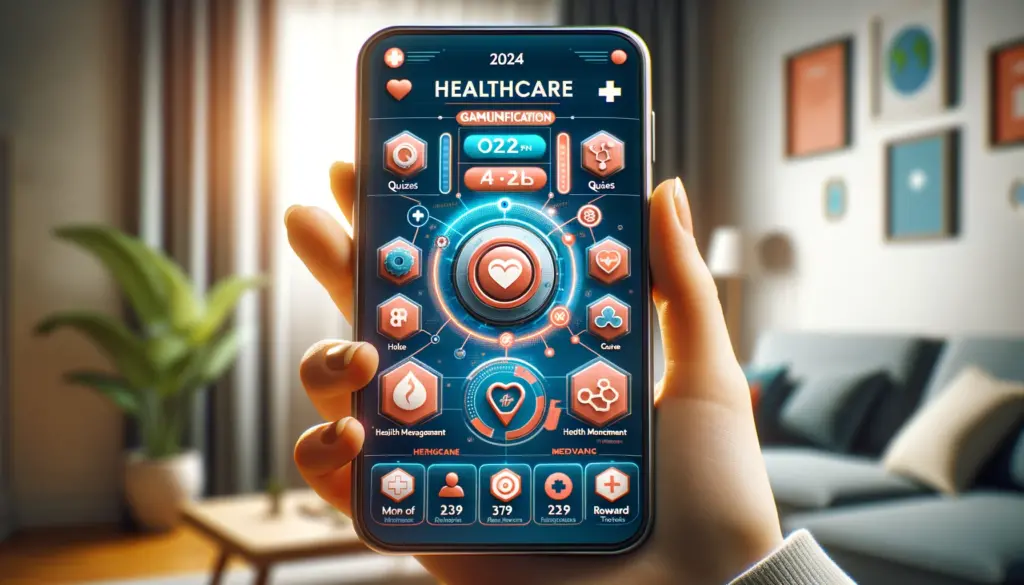
Artificial Intelligence (AI) in Healthcare Marketing
AI and machine learning unlock powerful opportunities to predict patient needs, personalize outreach, and optimize spend. AI adoption in healthcare currently lags behind other industries – but that’s quickly changing.
Here are some key AI applications in healthcare marketing:
AI-Powered Marketing Tools
- Predictive analytics – Identify patients most likely to need services based on analytical models considering past behavior, conditions, claims data, and other inputs.
- AI content creation – Use natural language generation (as this SEO Writing Tool) to produce draft content customized for specific patient segments.
- Content optimization – Apply AI to systematically test headlines, copy, designs, and other content variables to boost engagement.
- Chatbots and virtual assistants – Power conversational interfaces with AI to interact with prospects and patients.
- AI-guided campaign management – Machine learning algorithms can optimize campaign targeting, personalization, budget allocation, and other factors to improve performance.
AI enhances healthcare marketing at scale. By orchestrating data-driven, tailored interactions, AI solutions maximize the human impact of each touchpoint.
Measuring and Optimizing Marketing Performance
In a data-driven era, healthcare marketers must diligently measure performance using both quantitative and qualitative KPIs. By monitoring metrics and iterating based on results, teams can optimize continually.
Key Metrics to Track
- Volume metrics – Website visits, campaign reach, impressions, engagements, and other volume metrics reveal the scale of marketing initiatives.
- Engagement metrics – Bounce rates, time on site, content downloads, and similar engagement KPIs show content resonance.
- Conversion metrics – Goals like form fills, appointment bookings, patient referrals, program registrations reveal marketing ROI.
- Patient metrics – Metrics around patient satisfaction, NPS, retention, readmissions, and referrals indicate overall effectiveness.
- Paid media metrics – Metrics like click-through-rates, cost per lead, impression share, target CPA, and ROAS direct paid campaign optimization.
Optimizing Campaigns Based on Data
With performance benchmarks set, healthcare marketers can actively optimize based on results:
- Run A/B tests to determine the best-performing creative variants and copy.
- Refine audience targeting with additional layers of segmentation and personalization.
- Double down on high-ROI channels and initiatives while reducing inefficient spend.
- Build attribution models to understand patient touchpoint influence and journeys.
Agile marketing teams will outpace competitors by constantly monitoring and optimizing performance. Testing and learning will beat stagnant “set it and forget it” approaches.
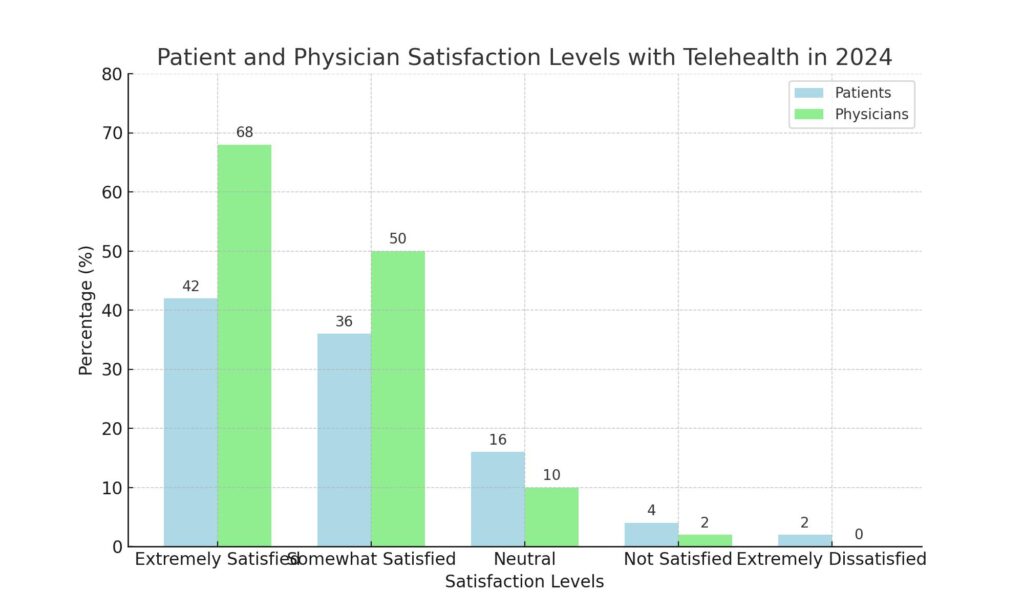
Conclusion
Healthcare marketing faces new imperatives for innovation as patient expectations evolve. Organizations that embrace creativity across channels, content, and experiences will gain an edge.
Key focus areas highlighted in this article include immersive digital experiences, value-driven content, virtual care adoption, influencer partnerships, automation, personalization, and data-driven optimization.
By starting to test and learn with new formats and strategies now, healthcare marketers can refine approaches over the coming months. The organizations leaping ahead today will reap rewards as we enter the next era of healthcare marketing in 2024 and beyond.
Those who cling to traditional tactics will be left behind as the competitive landscape intensifies. The time for innovation is now – especially as healthcare consumerism, transparency, and digital-first experiences become the new normal.
Healthcare marketers must also balance innovation with building trust. Security, ethics, and protecting patient data remain paramount.
With a foundation of trust established, there’s tremendous potential to enrich lives through meaningful innovations that educate, empower, and connect patients to the care they need. The ideas shared in this post aim to inspire healthcare marketers to think boldly yet thoughtfully to drive change.
Top 10 Most Popular Questions Related to Healthcare Marketing Ideas
What problems can healthcare marketing help solve?
Marketing can help attract more patients, grow market share, build reputation, and achieve profitable growth by reaching target audiences effectively.
How can we market tastefully without hurting our reputation?
Professional, ethical marketing actually enhances your reputation by communicating your credibility and expertise to inform and influence people positively.
Isn’t marketing expensive and risky?
Results-based marketing reduces risk and maximizes ROI. Proper planning and expert guidance can deliver cost-effective results.
How do we identify our target audience?
Analyze existing patient data, conduct market research, and develop buyer personas to segment your audience based on demographics, psychographics, and behaviors.
What makes healthcare marketing unique?
Healthcare marketing must navigate regulatory constraints, ethical considerations, sensitive health topics, and complex patient decision-making processes.
What should a successful healthcare marketing strategy include?
A clear understanding of target audiences, well-defined goals, strong branding, a mix of tactics, focus on acquisition and retention, and adherence to regulations.
How can we improve patient experience and retention?
Provide exceptional care from the start, gather feedback to identify improvements, and use targeted marketing to keep patients engaged.
What are some effective healthcare marketing tactics?
Tactics include SEO, content marketing, social media, email, events, and personalized campaigns to reach and engage target audiences.
How do we measure the success of our marketing efforts?
Track key metrics like website traffic, conversions, and ROI. Regularly analyze data to optimize campaigns and allocate budget effectively.
What should we look for in a healthcare marketing agency?
Look for an agency with healthcare expertise, a proven track record, a strategic approach, and a commitment to your goals and brand identity.
